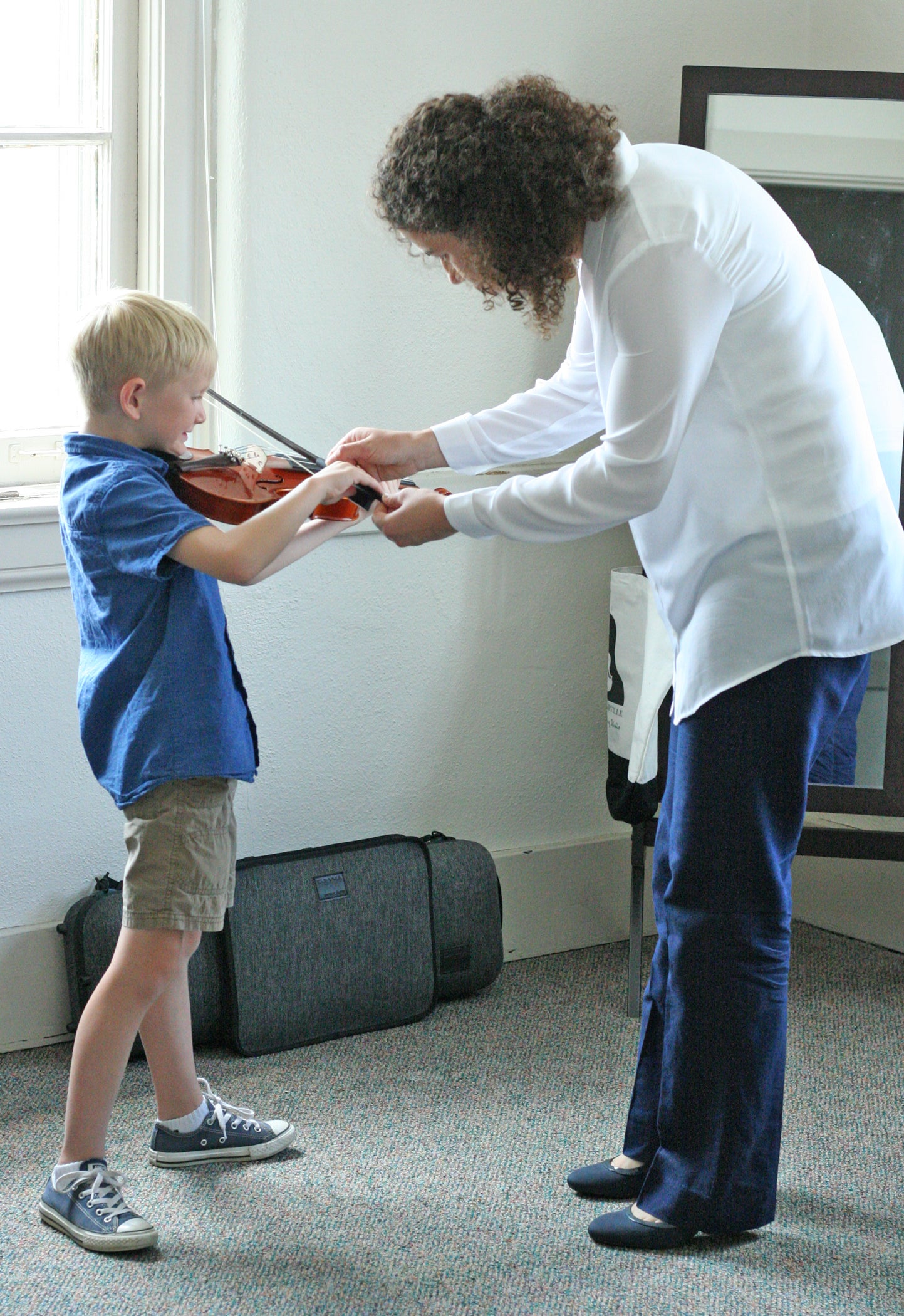Classical pair: Musical couple opens string studio in Danville
Published 1:08 pm Monday, July 3, 2017

- Kendra Peek/kendra.peek@amnews.com Luke and Sila Darville at the Darville String Studio in Danville.
Bringing all they have learned back home, Danville native Luke Darville and his wife Sila have come back to his home to open Darville String Studio, as a way to help students in the area.
Luke plays cello and Sila the violin; together, they are the Darville String Duo.
Besides cello, Luke plays piano and bass. He started at 13 in the Heritage Area Strings Program, and began taking lessons in Lexington.
“I loved it immediately … I really enjoyed doing it,” he said. “I had always thought it would be a fun thing to do.”
In addition to violin, Sila plays piano, viola and the vielle, which is a baroque instrument more common in Europe.
Originally from Turkey, she began playing violin at the age of six. She attended music school on the weekends, part-time, until becoming a full-time music student at the age of 12. Darville explained that music students in Turkey continue the program until they have completed their education in music.
She auditioned and when her dad asked, she said she didn’t know what to do.
“He said, ‘If you say yes, you have to be a musician,’” Sila Darville said.
She said yes.
The two met while studying in Minnesota — he for his doctorate, she for her master’s degree. They were in a chamber group together.
“We would go for coffee after,” Sila said.
Sila went on to Texas to pursue her doctorate; Luke began teaching at the University of Minnesota and playing for the symphony in Texas. After Sila completed her doctorate degree, they decided to move to Kentucky. This fall, Luke will teach at Centre College.
The Darville String Studio is upstairs in the Third Street Methodist Church building, former home of Centenary United Methodist Church.
Lessons will be offered in violin, viola, string bass, cello and piano. Class structures will include musicianship classes, which will include lessons of theory and history; studio classes, where individual students will play together; concerts and a recital every December and May.
The musicianship classes will include 15 minutes of technical skills, 15 minutes of technical-based music, or études, and 15-30 minutes of music at certain levels.
The études and technical skills are what builds the students’ skills, Sila said. The music a student plays at the end will be chosen by the individual students from a selection of pieces at their level, so “a 13-year-old doesn’t have to play ‘Twinkle, Twinkle Little Star,’” Luke said.
“People tend to be more invested if they decide what they want to play,” Sila said. “We emphasize more classical, so we don’t try to do these interpretations of pop music.”
Adults can also take lessons, they said. Some, Luke Darville said, find they enjoy it as a way to relax after work. If they are a parent taking the classes while their students do, it can help create a bond, he said.
Learning to play an instrument is important, they said, because it can dramatically impact their brain function and development.
“I think it’s really important in the development of students, their brain and their thinking. It encourages them to think more creatively,” Luke said.
A lot of medical schools, he said, look for extracurriculars such as music lessons.
They said they believe good teachers make a difference.
“I had a really good teacher,” Luke said.
“If you grow up with good teachers, you want to teach,” Sila said. “We were fortunate enough to have good examples.”
They said they love teaching — that’s why they wanted to start a string studio.
“I just enjoy sharing the passion for music,” Luke said. “It’s really fun to see people progress, too.”
Sila agreed, and said she thought seeing the progress was one of her favorite things.
“Especially if it’s not piano. If it’s piano, they touch a key and it’s a note every time. If it’s violin or cello, you start and you can’t — it’s a disaster. It’s like polishing a diamond. You see the stone that’s coming out and it’s nice to see the end,” she said. “Kids pick up things very quickly … It’s very rewarding to see that.
“I think it really does help with their worldview too. They begin to appreciate other arts. A lot of literature is put to music.”
If there is literature or a dance that goes with the music they are playing, the Darvilles said they try to show the children that connection.
“Especially today, learning an instrument makes you appreciate the hard work that goes in to making something beautiful,” Luke said.
ONLINE
- Kendra Peek/kendra.peek@amnews.com Luke and Sila Darville at the Darville String Studio in Danville.
- Kendra Peek/kendra.peek@amnews.com Andrew Ellis, 6, and Sila Darville during a violin lesson.
- Kendra Peek/kendra.peek@amnews.com Andrew Ellis, 6, and Sila Darville during a violin lesson.
- Kendra Peek/kendra.peek@amnews.com Luke Darville, left, and Anika Ellis, 9, right, during a cello lesson at Darville String Studio.
- Kendra Peek/kendra.peek@amnews.com Luke Darville, left, and Anika Ellis, 9, right, at Darville String studio.
- Kendra Peek/kendra.peek@amnews.com Luke Darville, left, and Anika Ellis, 9, right, at Darville String studio.
- Kendra Peek/kendra.peek@amnews.com Luke Darville, left, and Anika Ellis, 9, right, at Darville String studio.
- Kendra Peek/kendra.peek@amnews.com Jordan Ellis, left, and Luke Darville, right.
- Kendra Peek/kendra.peek@amnews.com Luke and Sila Darville, owners of Darville String studio, play their cello and violin, respectively.
- Kendra Peek/kendra.peek@amnews.com Luke and Sila Darville, owners of Darville String studio, play their cello and violin, respectively.
- Kendra Peek/kendra.peek@amnews.com Luke and Sila Darville, owners of Darville String studio, play their cello and violin, respectively.

















